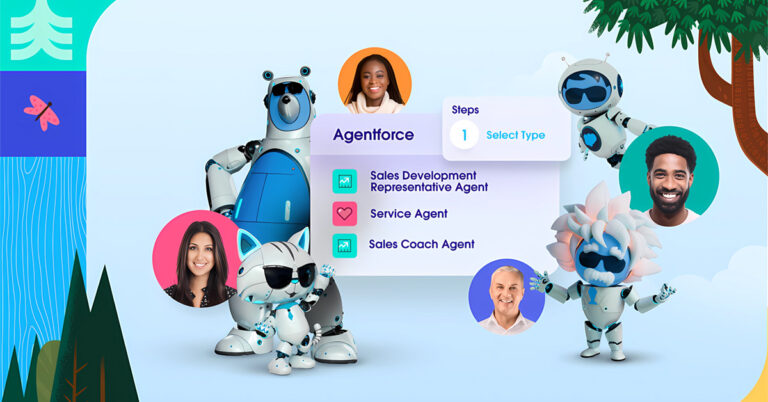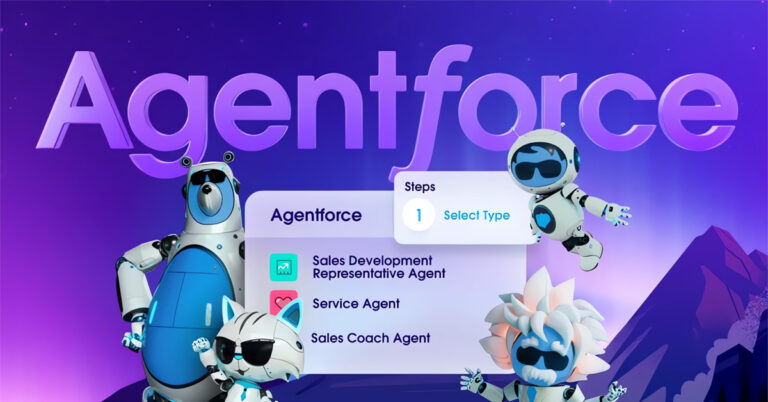
Introducing Salesforce Agentforce – The Future of Autonomous Agents
Salesforce Agentforce is a platform that enables organizations to build and manage autonomous agents for various business departments.
As a seasoned Salesforce implementation partner, we’ve seen it all – from seamless transitions to projects that hit roadblocks. While Salesforce offers unparalleled potential for businesses to streamline their processes and drive growth, the journey towards successful implementation can be riddled with challenges. Over the years, we’ve noticed recurring mistakes that many customers make when implementing Salesforce for the first time. Understanding these pitfalls is crucial for ensuring a smoother implementation process and maximizing the benefits of this powerful platform.
One of the most common mistakes customers make is diving headfirst into the implementation process without adequate planning and preparation. Salesforce is a complex platform with a wide range of capabilities, and without a clear roadmap, organizations risk getting lost in the weeds. From defining objectives and requirements to mapping out workflows and data migration strategies, thorough planning is essential for laying the groundwork for a successful implementation.
To avoid this pitfall, take the time to conduct a comprehensive needs assessment and engage key stakeholders early in the process. Define clear goals and objectives, prioritize requirements, and develop a detailed project plan with timelines and milestones. Investing in proper planning and preparation upfront will save time and resources down the line and set the stage for a smoother implementation journey.
Another common mistake is neglecting user adoption and training until after the Salesforce system is live. While implementing the technology is important, it’s equally crucial to ensure that end-users are onboarded effectively and equipped with the knowledge and skills they need to leverage the platform to its fullest potential.
To avoid this mistake, prioritize user adoption and training from the outset of the implementation process. Involve end-users in the decision-making process, gather their input, and address any concerns or resistance to change early on. Develop a comprehensive training plan tailored to the needs of different user groups, and provide ongoing support and resources to help users navigate the new system effectively.
One of the key benefits of Salesforce is its ability to streamline and automate business processes. However, many organizations make the mistake of implementing Salesforce without fully aligning it with their existing processes. This can lead to inefficiencies, duplicate efforts, and missed opportunities for optimization.
To avoid this pitfall, take the time to thoroughly understand your organization’s existing processes and workflows before implementing Salesforce. Identify areas where Salesforce can add value and streamline operations, and tailor the platform to align with your specific business requirements. Leverage Salesforce’s customization capabilities to configure workflows, automate repetitive tasks, and optimize processes for maximum efficiency.
Data is the lifeblood of any Salesforce implementation, and yet many organizations overlook the importance of data quality and migration until it’s too late. Poor data quality can undermine the effectiveness of the Salesforce system and lead to inaccurate reporting, lost productivity, and missed opportunities.
To avoid this mistake, invest time and resources in data cleansing and migration efforts early in the implementation process. Assess the quality of your existing data, identify any discrepancies or inconsistencies, and develop a plan to clean and migrate data to the new Salesforce system. Establish data governance policies and procedures to maintain data integrity moving forward, and regularly monitor and update data to ensure its accuracy and relevance.
Finally, one of the biggest mistakes customers make is treating Salesforce implementation as a one-and-done project rather than an ongoing journey. Salesforce is a dynamic platform that evolves over time, and organizations that fail to iterate and adapt risk falling behind and missing out on opportunities for innovation and growth.
To avoid this pitfall, adopt an agile mindset and approach to Salesforce implementation. Embrace a culture of continuous improvement and innovation, and regularly solicit feedback from end-users to identify areas for optimization and enhancement. Leverage Salesforce’s flexible architecture and ecosystem of apps and integrations to iterate on your implementation over time and adapt to changing business needs and market conditions.

Salesforce Agentforce is a platform that enables organizations to build and manage autonomous agents for various business departments.

Majente is thrilled to announce its inclusion on the Canada’s Top Growing Companies 2024 list, with a 3-year revenue growth of 140%.

Agentforce is an AI-powered builder that enables businesses to create AI-driven sales agents that automate and optimize sales processes.
Majente
Accelerate your business with Majente.
© 2024 – Majente – All Rights Reserved | Privacy Policy